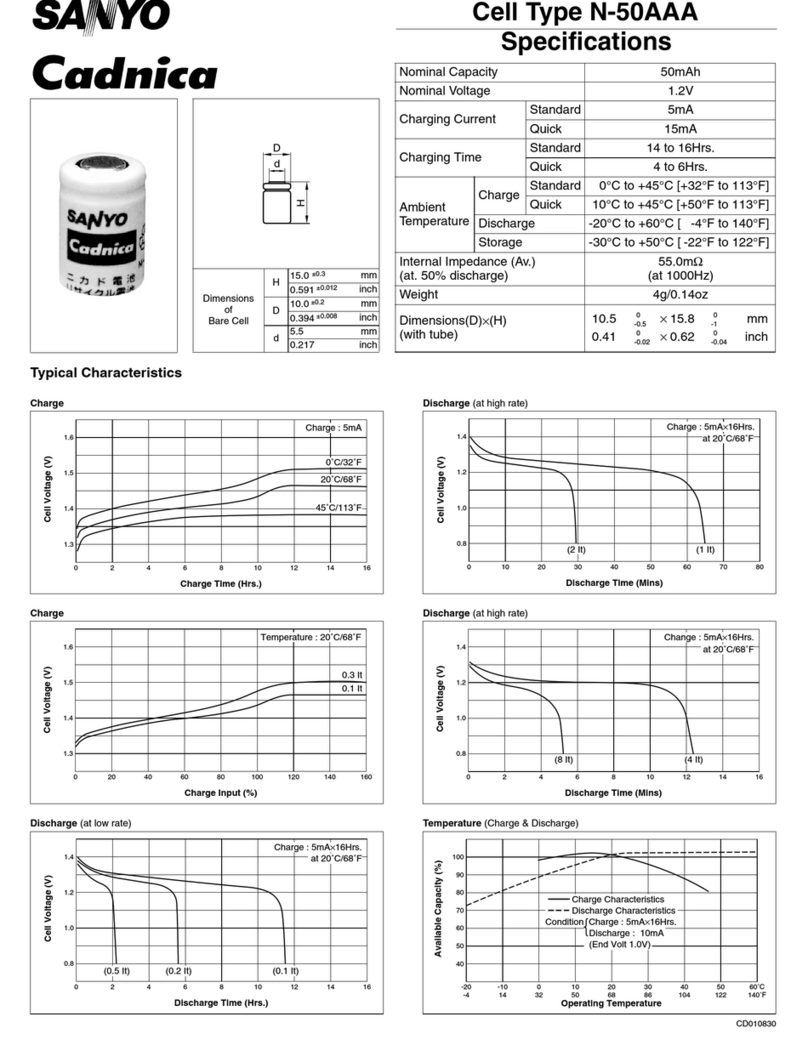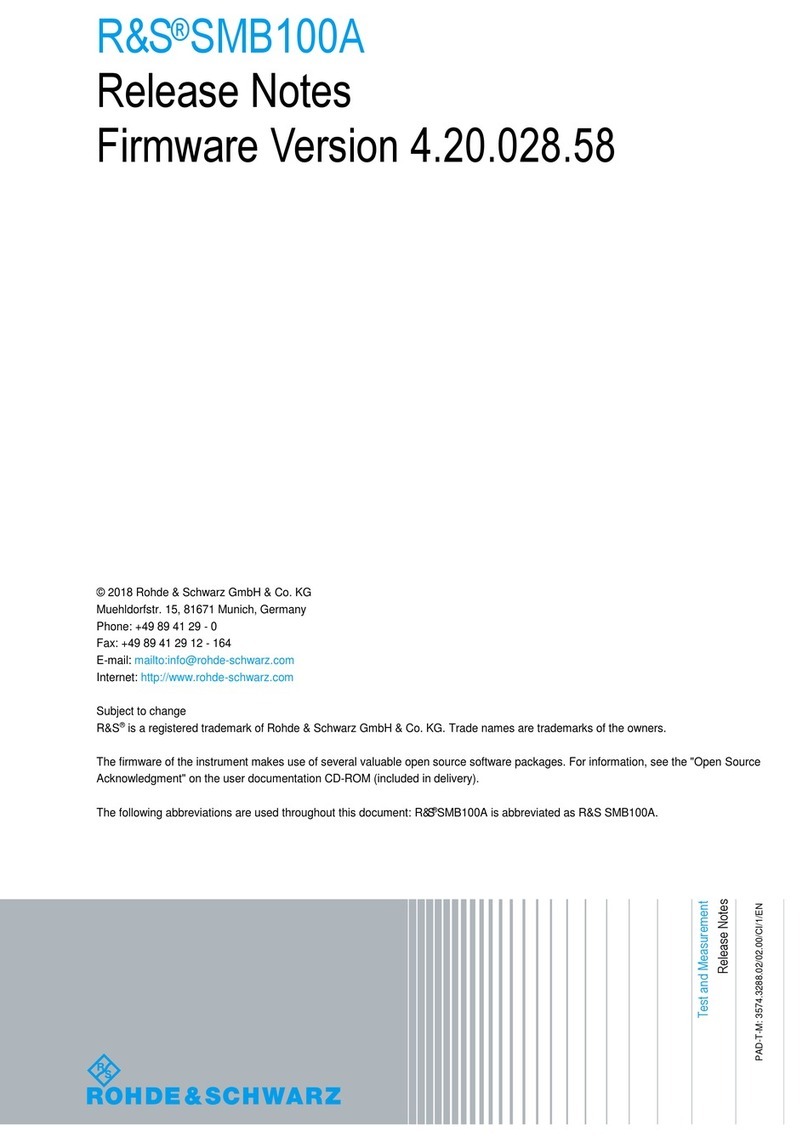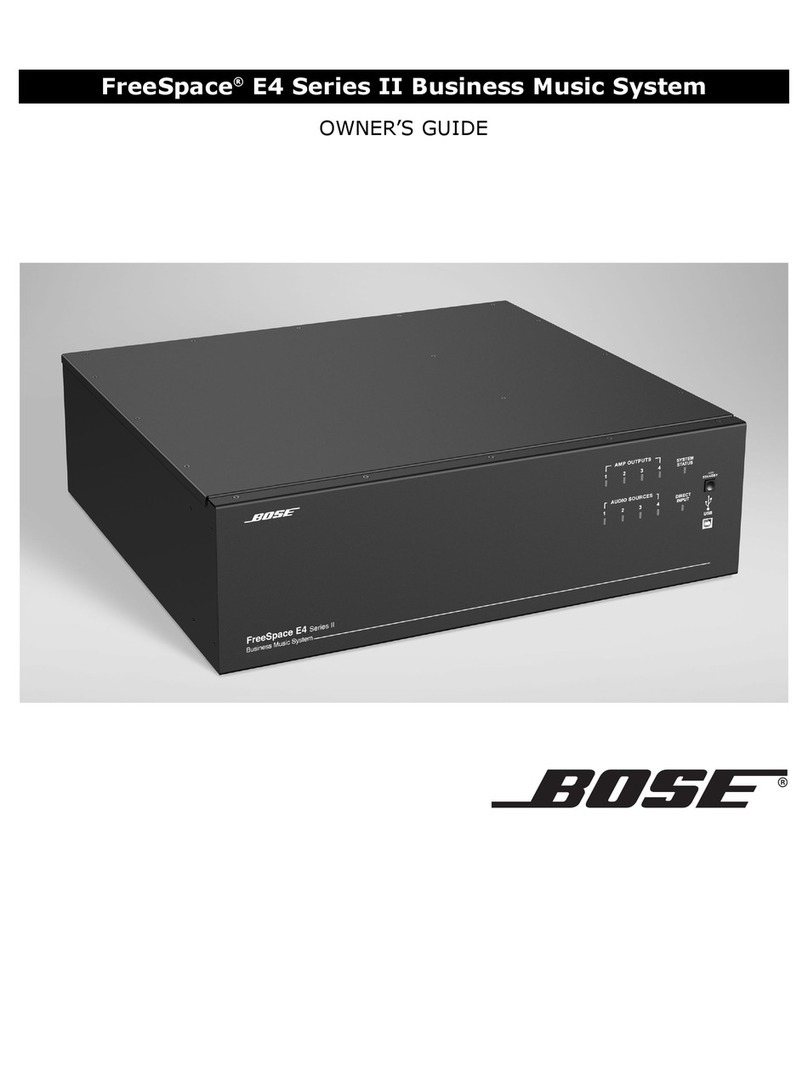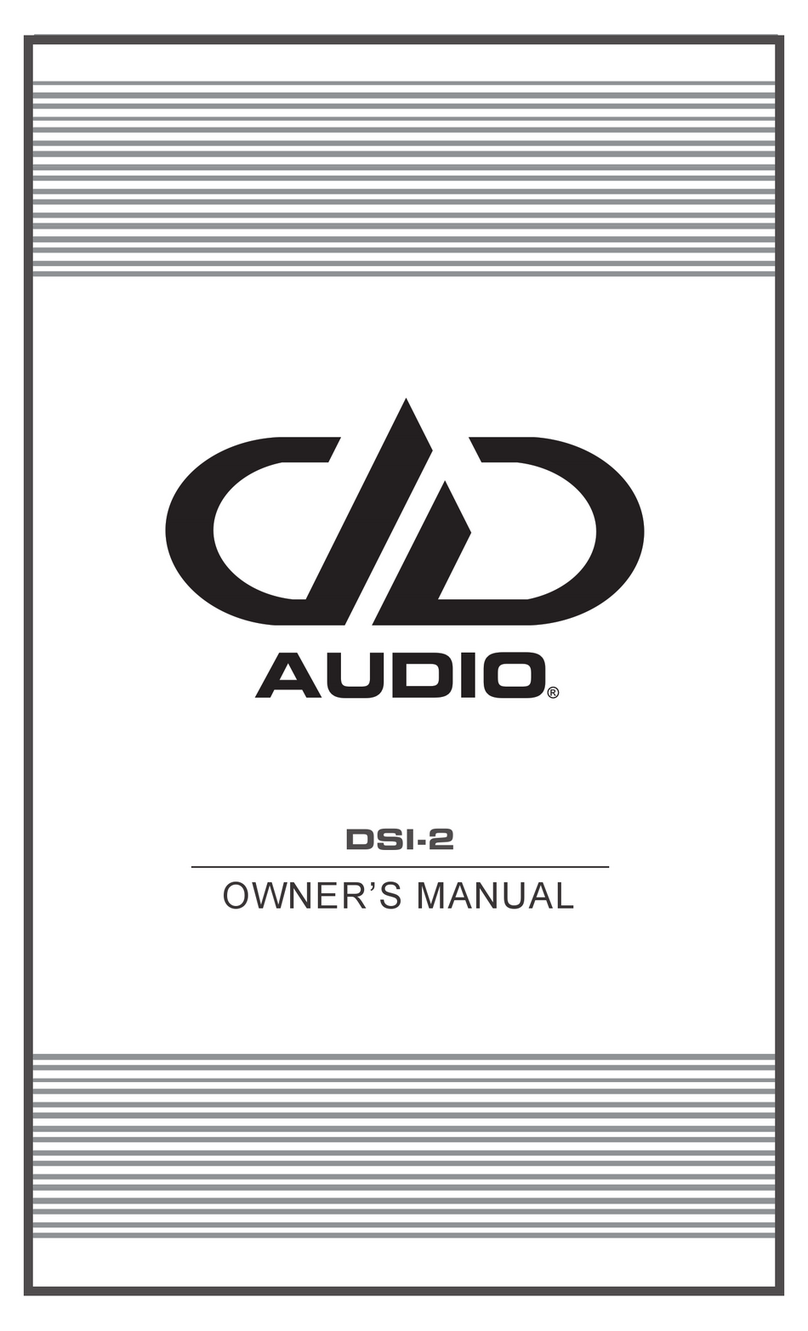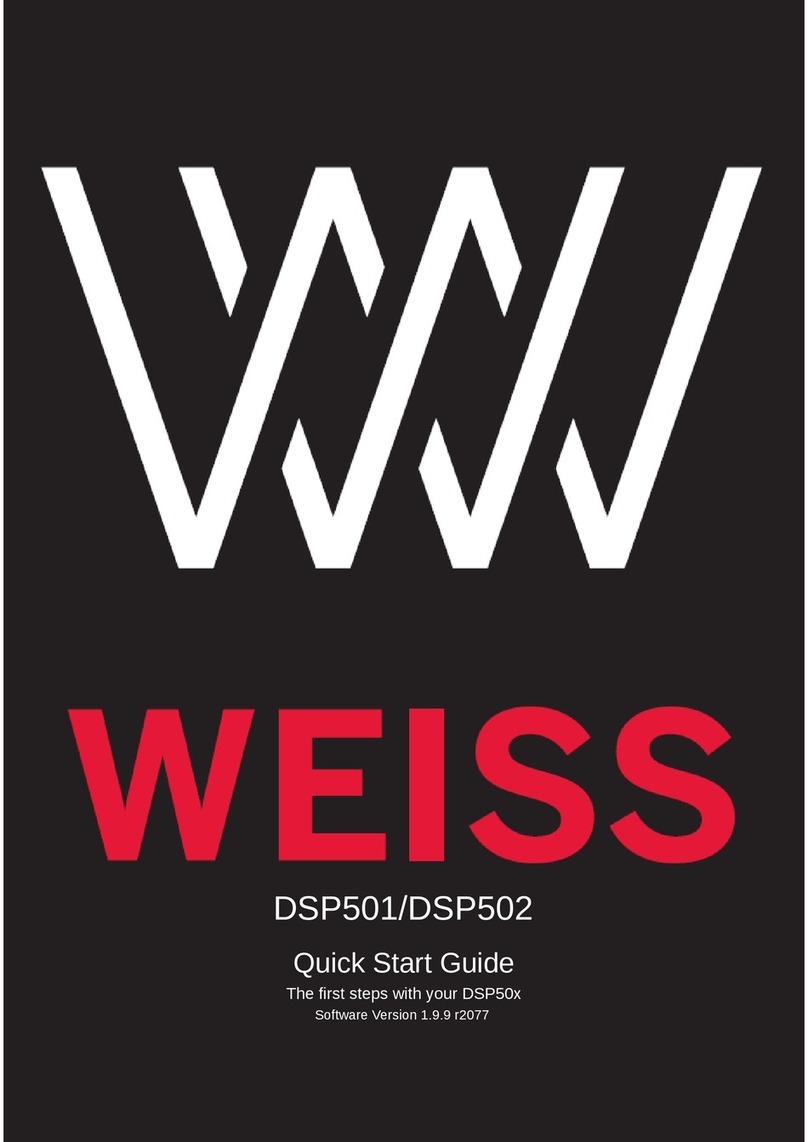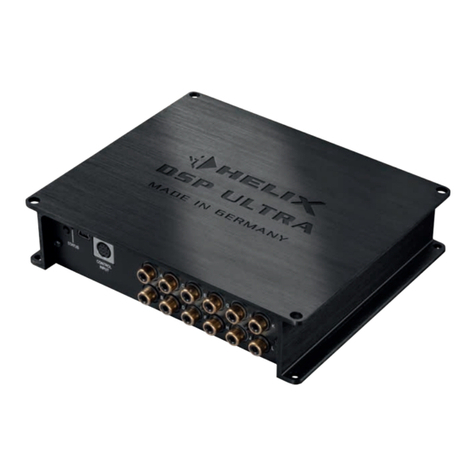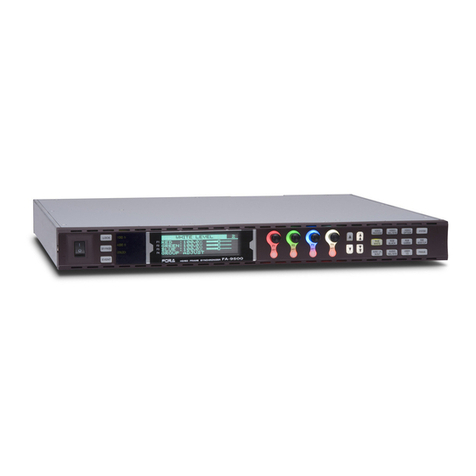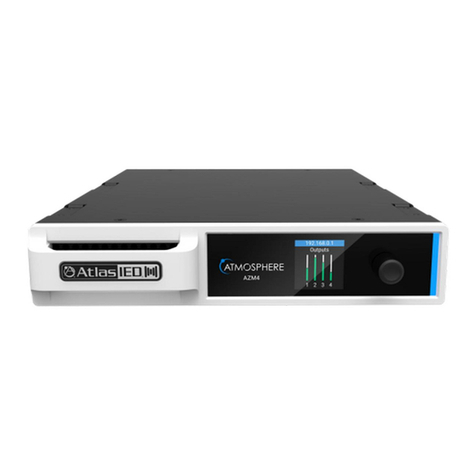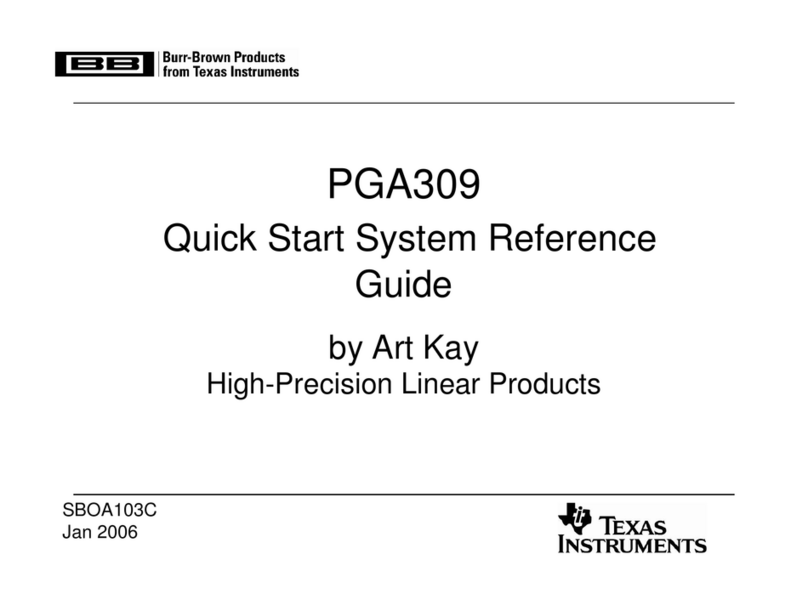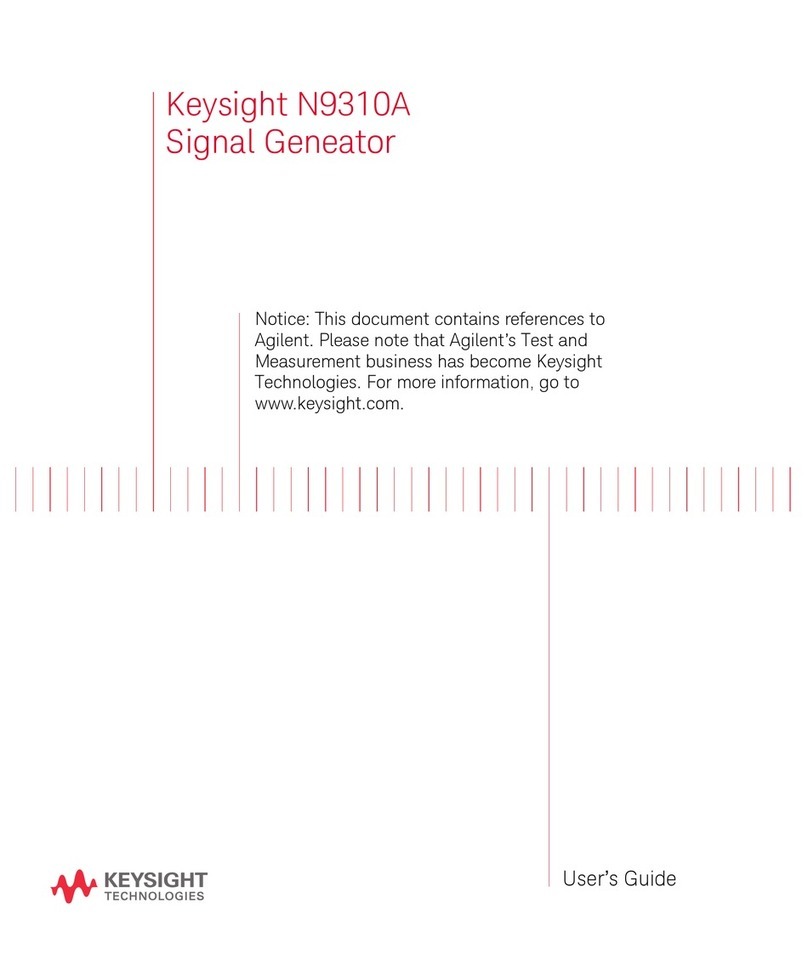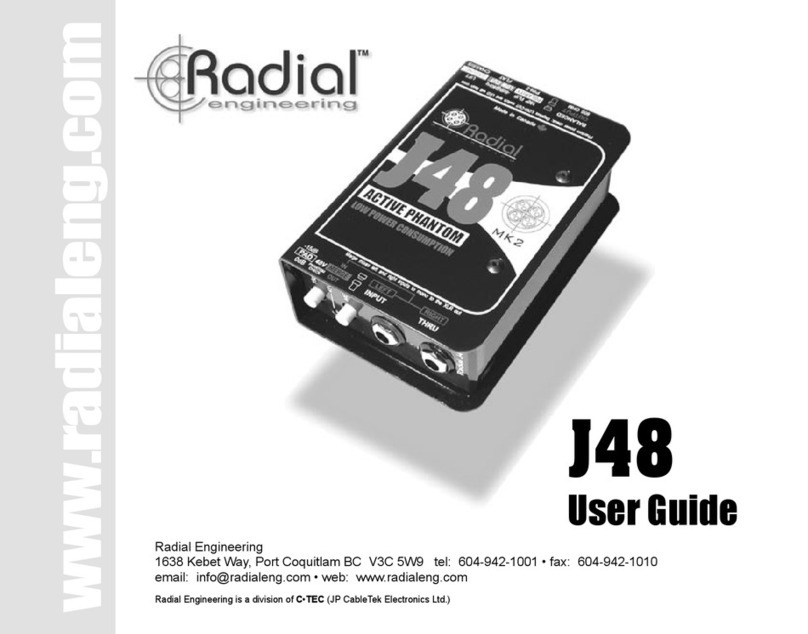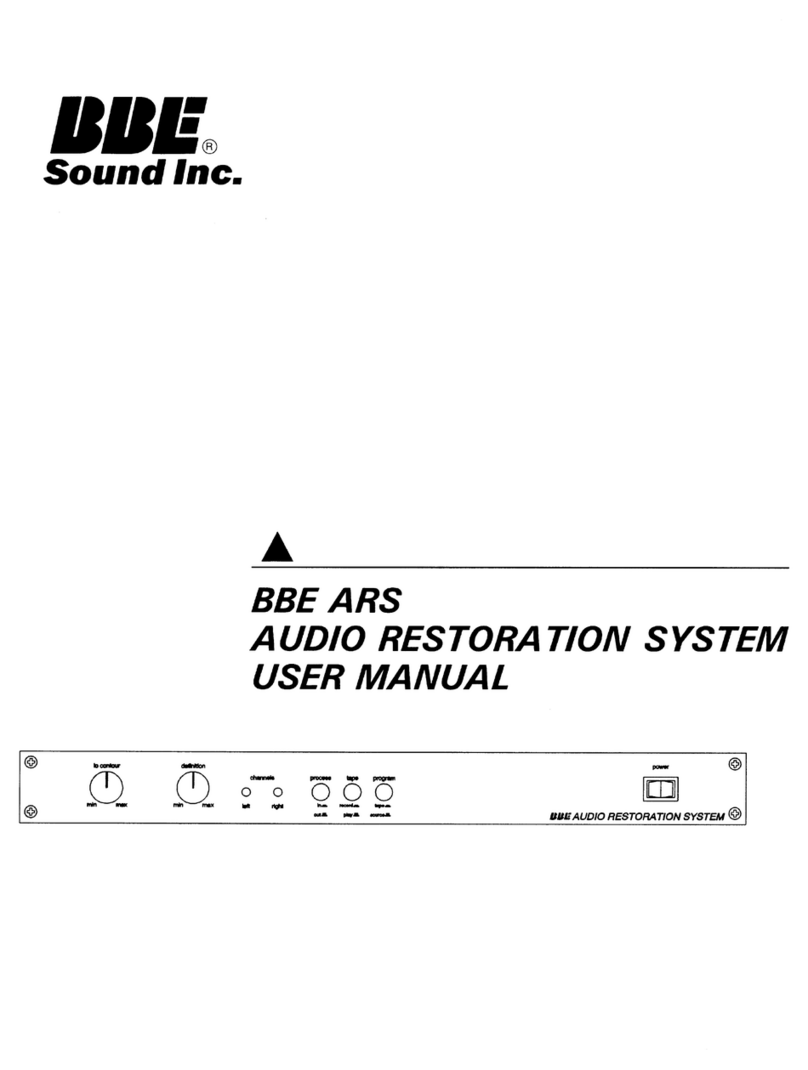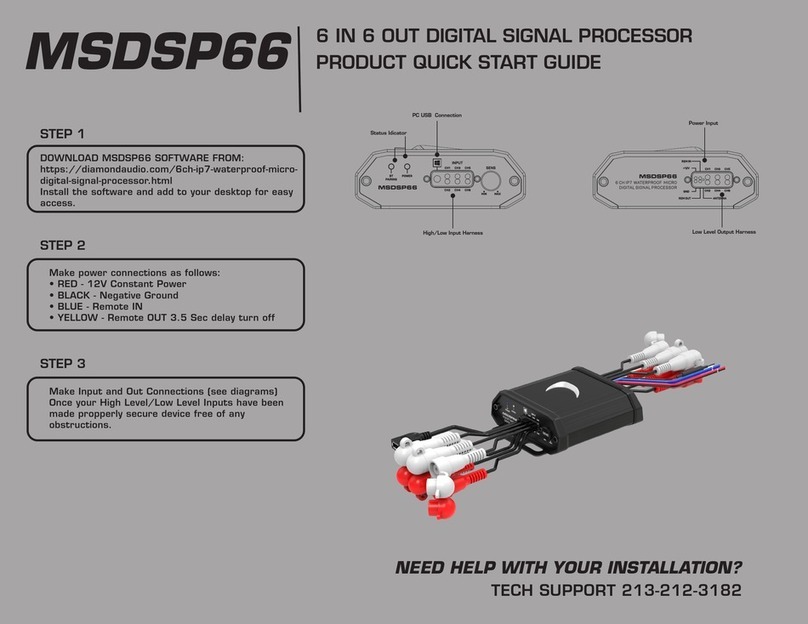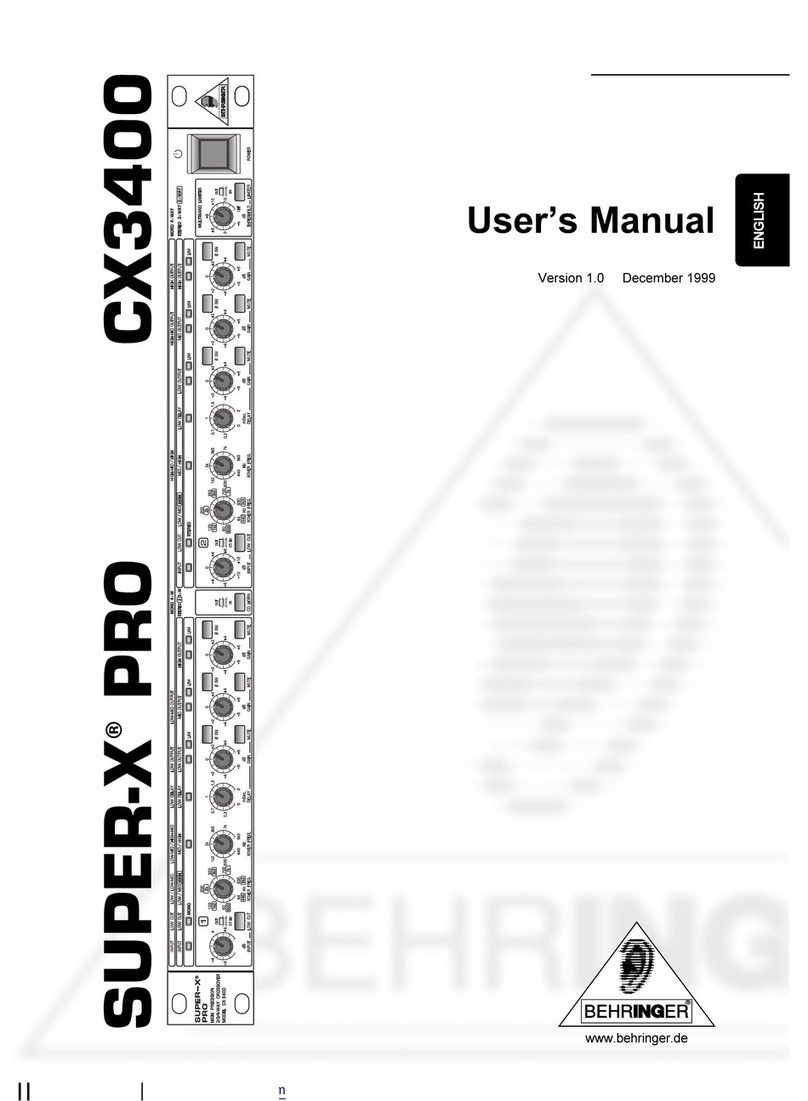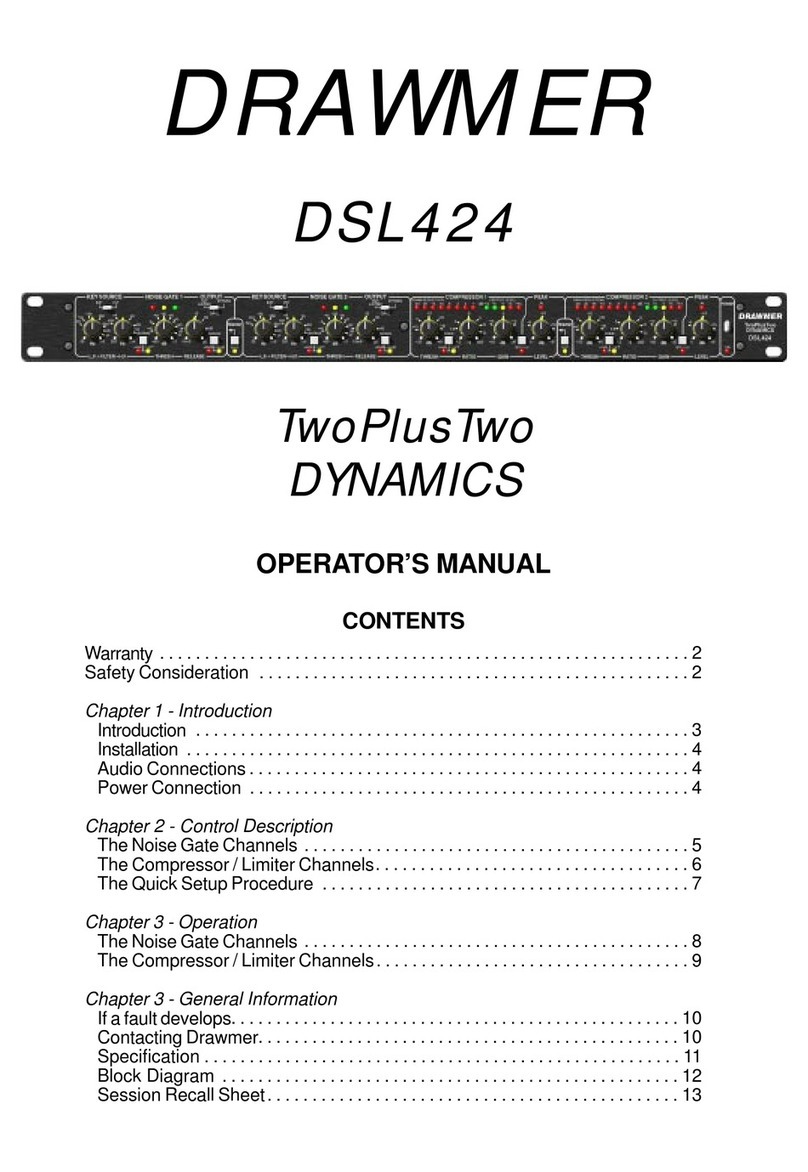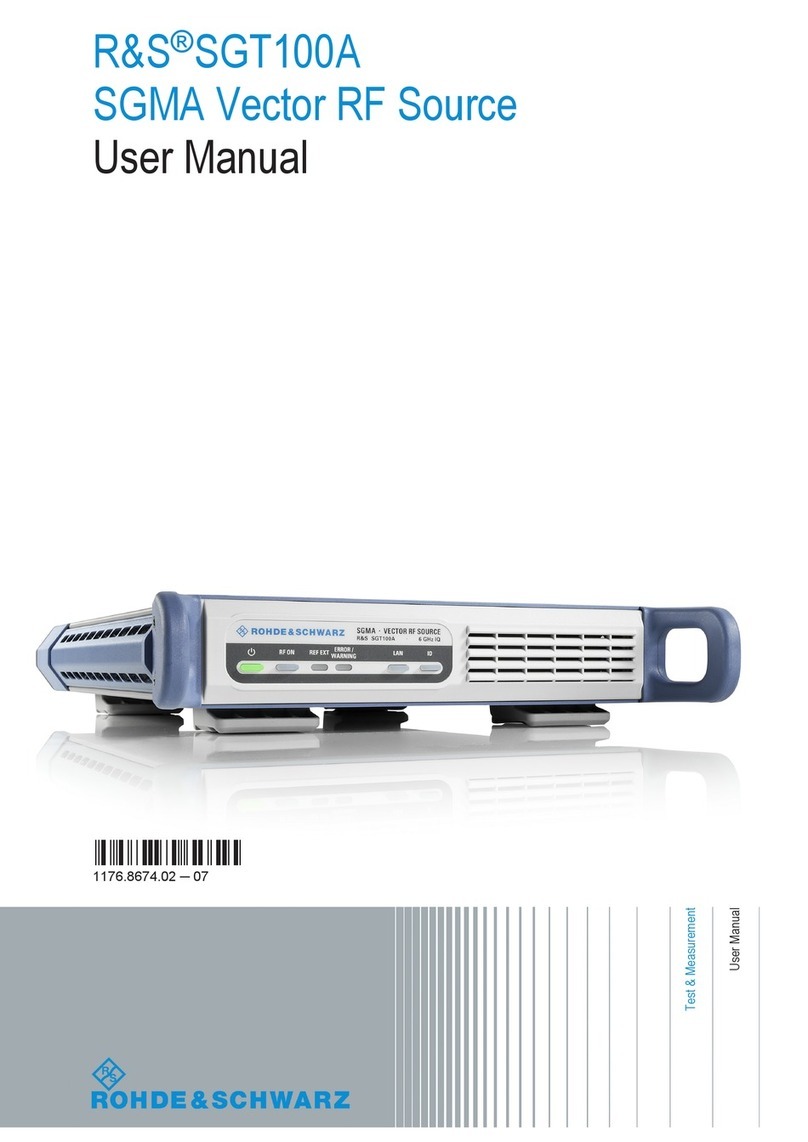Fostex 3180 User manual

Model
3180
REVERB
UNIT
Owners
Manual

TABLE
OF
CONTENTS
i.
LOCATION
OF
CONTROLS
(Front
panel)
.
2.
LOCATION
OF
CONNECTIONS
(Rear
panel)
...oooocommmcm.ocm.o
3.
INTRODUCTION
..............
4.
INSTALLATION
.....
5.
APPLICATION
NOTES
.........
6.
BLOCK
DIAGRAM
.............
7.
SPECIFICATIONS
..
SAFETY
INSTRUCTIONS
WARNING
“READ
BEFORE
OPERATING”
1.
Read
instructions—aAll
the
safety
and
operating
instruc-
tions
shoud
be
read
before
the
appliance
is
operates.
2.
Retar
Instructions—The
safety
and
operating
instruc
tions
shoud
be
retained
for
future
reference
w
Heed
Warnings—All
warnings
on
the
appiance
ard
in
the‘
operating
instructions
should
be
adhered
a,
4.
Follow
Instructions—All
operating
and
use
instructioss
should
be
followed.
5.
Water
and
Moisture—
The
appliance
should
not
e
used
near
waler—tor
example,
near
&
batrub,
washbowl,
kitchen
sink,
laundry
tub,
in
a
wet
basement,
or
near
a
swimming
pool,
etc.
6.
Ventilation
—The
appliance
should
be
situated
so
that
its
location
or
posit'on
does
not
interfere
w
th
ils
proper
ven-
tilation.
For
example,
the
appliance
should
not
be
situated
ona
ned,
sola,
rug,
or
similar
surtace
that
may
block
the
ventilation
openings:
ar,
placed
in
a
but-ir
installation,
such
as
a
bookcase
or
cabinet
that
may
impede
the
flow
of
air
through
the
ventilatior
openings.
7.
Heat—The
appliance
should
be
situated
away
from
heat
sources
such
as
radiators,
heat
registers,
stoves,
or
other
appliances
(including
amplifiers}
that
produce
heat.
8.
Power
Sources—The
appliance
should
ne
connected
to
a
power
supply
only
of
Ine
type
described
in
the
operati"g
instructions
or
as
marked
on
the
appliance
9.
Power-Cord
Protection—Power-supoly
coros
should
De
outed
so
that
they
are
no:
likely
to
be
walked
on
or
pinched
by
items
placed
upon
or
against
them,
payng
particular
attention
to
cords
at
olugs,
convenience
recep-
tacles.
and
the
point
where
they
exit
from
the
appliance
a
Ig
we
eov
FR
WN
Cleaning
The
appliance
should
be
cleared
only
as
recommended
py
the
manufacturer
Nonuse
Periods—The
power
cord
cf
tne
apoliance
should
be
unplugged
frorr
the
outle:
when
left
unused
fer
a
long
perioc
of
time.
Object
and
Liquid
Entry—Care
should
be
taken
so
that
objects
do
not
lail
and
liquids
are
not
spilled
into
the
enclosure
trrough
openings
3.
Damage
Requiring
Service—The
appliance
shoulc
be
serviced
by
qualified
service
personnel
when:
A,
the
power-supply
cord
or
the
plug
has
been
damaged
or
B.
Objects have
‘allen,
or
iquid
has
been
spilled
into
tne
appliance;
or
o
The
appliance
has
been
exoosed
to
rain;
or
o
The
appliance
does
not
appear
to
operate
normally
or
exhibils
a
marked
change
in
per'ormance;
ar
m
The
applance
"as
been
dropped,
or
Ine
eric
osure
damagec
Servicing—The
user
should
not
attempt
to
service
the
app'ance
beyond
tha:
described
in
the
operating
n-
structions.
All
other
servicing
should
be
referred
to
qualified
service
personnel.
WARNING:
To
avoid
possible
electric
shock
hazard,
do
not
expose
this
appilance
to
rain
or
molsture.
There
are
no
user
serviceable
parts
inside.
Refer
servicing
to
qualified
service
personnel.

FRONT
PANEL
REAR
PANEL

1.
LOCATION
OF
CONTROLS
(Front
panel)
(1)
Input
Jacks
Each
channel
is
accessible
from
either
front-panel
standard
phone
jacks
or
rear-panel
standard
pin
jacks.
When
both
are
con-
nected,
signal
from
the
front
panel
input
has
priority;
the
rear
panel
input
then
has
a
no
signal
status.
(2)
Input
Level
Control
When
this
control
is
open
(full
CW
position),
the
minimum
level
required
to
drive
the
unit
adequately
is
-30dBV
(30
mv).
Normal
operation
requires
a
nominal
adjustment
to
match
the
input
signal
level
to
that
required
by
the
drive
circuit
of
the
spring
unit.
(-104BV
is
considered
normal
line
level.)
(3)
Overload
Indicator
This
LED
ignites
at
limiter
threshold
indicating
an
overload
signal
status
just
prior
to
the
drive
circuit.
As
a
limiter
is
provided,
program
material
with
relatively
few
fast
transients
will
be
processed
accurately,
even
though
the
LED
occasionally
blinks.
With
predominant
fast
transient
program
material,
however,
the
input
level
should
be
adjusted
if
the
LED
blinks
frequently.
(4)
Output
-
Dry
g
Controls
the
output
level
of
the
unprocessed
signals.
(5)
Output
-
Reverb
Controls
the
output
level
of
the
processed
signals.
As
the
3180
features
a
stereo
effect
return,
a
single
shaft
two-ganged
pot
is
used
for
the
output
control,
The
signals
at
the
output
jacks
will
be
a
mix
of
dry-to-reverb,
as
determined
by
the
settings
of
these
controls,
NOTE:
For
those
occasions
when
you
want
to
control
the
dry-to-
reverb
mix
at
the
console,
simply
turn
the
Dry
Output
control
fully
CCW.
(6)
Input
Mix
On/Off
Off
will
be
your
normal
position
for
processing
stereo
signals,
On
will
be
the
position
to
select
when
you
want
to
mix
two
input
channels
or
split
one
input
to
two
channels.
(7)
Reverb
Remote
On/Off
Jack
This
jack
accepts
the
Fostex
Model
8030
remote
foot
pedal

control,
or
equivalent.
When
in
use,
this
optional
accessory
allows
you
to
turn
the
reverberation
processing
on
and off
as
the
dry
signal
is
either
allowed
to
pass
(PA)
or
not
allowed
(mixdown)
.
See
Application
Notes,
page
9
.
(8)
Output
Jacks
Each
channel
is
accessible
from
either
front
panel
standard
phone
jacks
or
rear
panel
standard
pin
jacks,
wired
in
parallel.
NOTE:
When
the
output
level
controls
are
at
maximum,
there
is
a
1
V
output
present
at
these
jacks.
(9)
Power
Switch
When
depressed,
an
LED
(10)
will
ignite
to
indicate
power
on.
(10)
Power
Indicating
LED
2.
LOCATION
OF
CONNECTIONS
(Rear
panel)
(1)
INPUT/FOLDBACK
The
INPUT
jack
and
the
FOLDBACK
jack
are
wired
in
parallel.
Wiring
between
the
front
panel phone
type
INPUT
Jacks
and
these
jacks
on
the
rear
panel
are
such
that
priority
is
given
to
the
front
panel
jacks
which
means
that
signals
to
the
rear
panel
INPUT
jacks
will
be
cut
off
when
any-
thing
is
plugged
into
the
front
panel
INPUT
jacks.
(2)
Output
-
Norm
These
are
the
normal
reverb
outputs
of
the
Model
3180
and
are
wired
in
parallel
with
the
front
panel
output
jacks.
(3)
Output
-
Stereo
Effect
These
are
the
additional
output
jacks
to
use
when
the
stereo
effect
is
desired.
Since
the
Model
3180
has two
independent
chan-
nels,
two
independent
mono
signals
may
be
processed
with
the
stereo
effect
simultaneously.
(4)
Power
Cord

3.
INTRODUCTION
-
Why
Reverberation?
Reverberation
is
an
important
part
of
our
everyday
experience
of
sound.
Without
the
natural
ambience
caused
by
multiple
reflec-
tions
and
gradually
decaying
sound
sources,
music,
especially,
would
sound
flat,
empty.
Figure
1
shows
a
typical
response
--
growth
and
decay
--
of
sound
in
a
room.
ENERGY
DENSITY
PLAN
View
wl
TIME
ENERGY
DENSITY.
1B;
TIME
ENERGY
DENSITY.
PLAN
VIEW
w
TIME
>
E
8
$
o
3
3
&
2
PLAN
VIEN
m
TIME
A
two-dimensional
version
of
the
growth
and
decay
cf
the
souná
in
a
room.
Here,
S
is
the
source
of
sound
and
O
the
observation
point.
(A)
The
direct
sound
energy
D
and
the
reflected
sound
energy
Ri,
Rz,
Ra;
and
Rae,
from
the
four
walls
(B)
The
addition
of
the
second
reflections
Rs,
Re,
Ry,
and
Re.
(C)
A
large
number
of
reflections
which
approximate
steady-
state
conditions.
(D)
The
decay
of
sound
energy
after
the
source
has
stopped.
Source:
Journal
of
the
Audio
Enginecring
Society,
Vol.
6,
No.
1.
Used
with
permission.
Fig.
1l.

Since
all
reverberation
devices
are
designed
to
simulate
the
natural
characteristics
of
rooms,
it
would
seem
logical
to
design
a
room
specifically
for
reverberation
purposes.
"Chambers",
as
they
are
called,
are
still
very
much
in
use
today:
But
they
are
enormously
impractical
for
most
people
because
of
custom
construction
(non-parallel
surfaces)
and
special
materials
(lead
or
concrete
for
true
isolation).
The
need
for
artificial
reverberation
devices
grew
dramatically
with
the
advent
of
multitrack
recording
techniques.
Close-micing
techniques,
highly
absorbent
rooms,
even
isolation
booths
were
all
developed
to
help
the
engineer
isolate
individual
instruments
on
separate
tracks
during
the
recording
process.
Each
track
would
be
as
"tight"
and
sonically
pure
as
possible
in
order
to
have
almost
limitless
flexibility
during
the
mixdown
process,
where
the
final
version
is
rendered.
The
enhancement
of
reverberation
added
selectively,
track
by
track,,
gave
the
engineer
more
control
over
the
overall
mix.
And
by
varying
the
reverb effect
dynamically,
a
sound
could
be
made
to
move
closer
or
further
away,
as
well
as
left
and
right
across
the
stereo
panorama.
Today,
of
course,
there
are
many
elaborate
(and
expensive)
reverberation
devices.
There
are
also
a
few
simple
(and
cheap
sounding)
reverberation
units.
Your
Fostex
Model
3180
is
a
shining
example
of
how
modern
technology
has
achieved
a
remarkably
natural
reverb
sound
at
a
remarkably
reasonable
price.
It
was
clear
that
springs
were
perfectly
capable
of
generating
a
natural
reverberant
characteristic
or
quality.
ft
was
also
known
that
the
size,
mass
and
material
of
the
springs
were
determining
factors
in
the
quality
of
the
sound.
4.
INSTALLATION
(1)
Placement
Be
sure
that
your
3180
is
positioned
away
from
other
trans-
ducers,
especially
loudspeakers.
This
is
a
mechanically
sensitive

device
which
is
susceptible
to
transmission
of
loud
sounds
in
the
immediate
acoustic
environment.
NOTE:
The
3180
has
magnets
inside,
so
avoid
putting
tapes,
especially,
on
top
of
the
unit.
{2)
Power
It
is
advisable
to
turn
the
power
switch
on
in
advance
of
using
the
unit,
and
to
avoid
contact
with
the
chassis
while
in
use.
Sudden
power
surges
and
accidental
bumps
will
be
audible
as
un-
wanted
"pings"
and
"boings".
NOTE:
Long
cable
runs
(more
than
ten
or
twelve
feet)
are
notoriously
susceptible
to
interference,
and
are
therefore
not
recommended.
(3)
Hook-up
As
a
general
rule
for
a
fixed
application
like
mixdown,
if
you
connect
the
rear
panel
jacks
to
a
patchbay
(like
the
Fostex
Model
3010)
you'll
have
the
most
flexible
access
to
the
unit.
Then
you
can use
jumper
cables
like
assign
switches
and
be
able
to
patch
and
re-patch
the
3180
wherever
you
want
it
in
the
signal
path.
See
Figure
2.
FOSTEX
3180
PATCHBAY
a
(REAR)
REVERB
UNIT
Wro
MIXER
INPUT
Fig.
2.
All
inputs
and
outputs
of
the
3180
connected
to
a
patchbay.
In
the
absence
of
a
patchbay,
but
presuming
a
mixer,
you
will
probably
want
to
connect
your
mixer's
echo
send
(aux
send/effects
send/aux
out)
to
the
3180's
line
in.
Then
connect
the
3180's
line
out
to
the
mixer's
echo
return
(echo
receive/aux
in/buss
in)
as
shown
in
Figure
3.

FOSTEX
350
ECHO
SEND/AUX
OUT
FOSTEX
3180
REVERB
UNIT
ECHO
RCV/BUSS
IN
Fig.
3.
Typical
hook-up
with
a
mixer.
ECHO
SEND/AUX
OUT
FOSTEX
3180
p
REVERB
UNIT
TO
INPUT
CHANNELS
Fig.
4.
Alternate
hook-up
with
a
mixer.
As
an
alternative
patch,
you
might
want
to
connect
the
output
of
the
3180
to
the
mixer's
input
channel(s)
for
further
signal
processing
of
the
reverberated
audio
and
console
controlled
mixing
of
the
dry-to-reverb
sound
as
shown
in
Figure
4.
Another
variation
would
be
to
connect
the
outputs
of
a
stereo
tape
recorder
directly
to
the
3180,
and
mix
the
final
dry-to-reverb
ratio
as
you
make
a
dub.
This
method
is
an
effective
way
to
enhance
old
2-track
tapes
you
may
have
made
before
you
had
a
reverberation
unit.
(4)
Front
Panel
Connections
The
standard
phone
jacks
on
the
front
panel
will
probably
be
your
typical
patch
source
on
the
road.
But
they
will
also
be
useful

in
the
studio
when
a
sudden
inspiration
hits,
and
you
want
to
connect
a
synthesizer,
for
example,
quickly
--
and
without
disturb-
ing
your
normal
hook-up.
Since
the
front
panel
jacks
are
wired
in
parallel
and
have
priority
over
the
rear
panel,
it
is
extremely
easy
to
make
such
a
connection.
(5)
Stereo
Effect
Because
of
the
unique
drive
circuit
in
the
3180,
you
can
achieve
a
sterea
effect
from
a
mono
signal,
and
open
a
new
acoustic
dimension
right
before
your
very
ears.
See
Figure
5
for
connection.
FOSTEX
350
ECHO
SEND
(MONO)
FOSTEX
3180
e
$
$e
REVERB
UNIT
TO
INPUT
CHANNELS
{TWO}
Fig.
5.
Typical
hook-up
of
3180
for
stereo
effect.
For
example,
a
lead
vocal
ordinarily
occupies
one
track
on
the
multitrack
master
and
is
mixed
to
center
position
during
the
mix-
down.
Usual
procedure
would
be to
pan
the
reverberated
return
either
left
or
right
of
conter
for
an
effect
of
added
depth.
The
3180,
however,
can
process
a
single
channel
into
two
output
signals
with
a
random
phase
correlation
for
a
superior
stereo
effect.
Using
the
same
example,
the
dry
lead
vocal
would
appear
in
the
center
position,
but
the
reverberated
stereo
return
could
be
panned
across
the
entire
stereo
panorama,
left
to
right,
for
a
much
more
realis-
tic
presentation.
To
our
knowledge,
this
is
the
first
time
such
an
effect
has
been
available
in
a
low
cost
unit.
(6)
Remote
Foot
Pedal
This
optional
accessory
is
useful
for
both
on-stage
as
well
as
in
studio
situations.
A
live
guitar
solo,
for
example,
may
only

require
a
reverberation
effect
at
the
end,
and
so
the
3180
may
be
punched
in
and
out
during
the
appropriate
part,
while
passing
the
dry
signal
before
and
after
the
punch.
(7)
On
the
Road
Your
3180
will
be
a
top
road
performer
as
long
as
you
treat
it
with
the
same
respect
and
care
you
would
give
a
$450
microphone.
Just
like
the
microphone
transducer
element,
the
spring
transducer
is
maintained
in
precise
mechanical
alignment.
Extreme
physical
shock
should
always
be
avoided.
NOTE:
The
Fostex
optional
flight
case
Model
9040
is
recommended
when
you
travel
with
your
3180.
5.
APPLICATION
NOTES
(1)
(2)
(3)
Commercial
Audio
-
the
subtle
effect.
Subconsciously,
everyone
is
aware
of
the
presence
of
reverberation,and
a
small
amount
added
to
an
announcer's
voice
can
have
a
positive
subliminal
effect
on
the
listener.
Speech
treated
in
this
manner
will
likely
appear
clearer
because
of
the
added
warmth
and
fullness;
plus,
brief,
silent
gaps
between
words
are
occupied
by
some
sound
--
a
very
helpful
aid
when
you're
dealing
with
a
hesitant
or
unevenly
paced
reading.
Broadcasters
and
audio
visual
producers
have
long
real-
ized
and
appreciated
the
benefits
of
the
subtle
use
of
reverberation
in
commercial
audio.
Creative
Audio
-
the
exaggerated
effect.
As
Paul
Simon
has
said,
“One
man's
ceiling
is
another
man's
floor."
Don't
be
afraid
to
turn
it
up
in
the
spirit
of
rock
and
roll
enthusiasm.
Experiment,
by
all
means.
You
run
very
little
risk
of
damaging anything
other
than your
ego.
And
you
may
well
find
a
grain
of
truth
in
the
cynical
re-statement
of
a
famous
maxim:
“Nothing
succeeds
like
excess."
Subjective
Value
Judgments
No
matter
how
classically
pure your
tastes
and
inclina-
tions,
it's
a
relatively
easy
matter
to
"listen
through"

10
music
with
a
lot
of
compression,
limiting
and
filtering.
FM
radio
is
a
prime
example.
But
an
overdose
of
reverb,
where
everything
begins
to
sound
mushy
and
muddy,
is
awfully
difficult
for
most
people
to
tolerate.
Of
course,
the
very
point
in
question
here
is
that
terms
such
as
"overdose",
"mushy"
and
"muddy"
are
ali
subject
to
personal
evaluation.
Reverberation
units,
like
speakers
and
microphones,
are
ultimately
a
matter
of
personal
opinion.
Naturally,
we
have
a
rather
high
regard
of
your
personal
opinion
because
you
purchased
a
3180
which,
in
our
opinion,
represents
the
best
value
for
a
product
of
its
kind
on
the
market
today.
We
thank
you
for
that
purchase
and
we
wish
you
much
success
in
all
your
recording
endeavors.
In
the
course
of
your
experimentation,
if
you
should
find
a
particularly
satisfying
reverb effect
from
the
3180,
please
send
us
the
details,
and
we'll
be
happy
to
pass
the
information
along
to
other
discerning
customers
who,
like
you,
had
the
good
sense
and
personal
taste
to
buy
a
Fostex
3180.
6.
BLOCK
DIAGRAM
CHANNEL
|
pesa]
4
es
‘REVERS
REMOTE.
9
|
p~
EE
ll
se
severe
ime
foen
E
E
"T
se
aue
Forcea
~
m
semen
our
CHANNEL
2
MOTE:
OME
OF
TWO
CHANNELS
SiON.

7.
SPECIFICATIONS
Input
Input
Impedance
Input
Level
Output,
Normal
Normal
Stereo
Output
Load
Impedance
Output
level
Maximum
output
level
Reverberation
decay
time
Pre-Delay
Time
Frequency
range
Dry
Reverb
T.H.D..
Dry
Signal
to
Noise
Ratio
Dry
Reverb
Power
Requirements
Dimensions
Weight
Optional
accessories
Unbal.
phone
jack
(Front
panel)
Unbal.
RCA
phono
jack
(Rear
panel)
50
Kohms
Minimum
-30dB
(30mV)
Maximum
+30dB
(30V)
Unbal.
phone
jack
(Front
panel)
Unbal.
RCA
Phono
jack
(Rear
panel)
Unbal.
RCA
Phono
jack
(Rear
panel)
5
Kohms
or
higher
OdB
(1V),
adjustable
+174B
(7V)
3
sec.
(ref.
to
1
KHz)
24
msec
20
Hz
*
20
KHz
200
Hz
œ%
7
KHz
Less
than
0,02%
80dB
unwt'd,
82dB
wtd.
589B
unwt'd,
60dB
wtd.
120V
AC,
60
Hz,
9W
(U.S.A./Canadian
models)
220V
AC,
50
Hz,
9W
(European
models)
240V
AC,
50
Hz,
9W
(UK/Australian
models)
100/120/220/240V
AC,
50/60
Hz,
9W
(General
export
models)
17"(W)
x
3-1/2"(H)
x
8-1/4"(D)
[430(W)
x
88(H)
x
210(D)mm]
Net
8-1/4
lbs.
(3.7
Kg)
Shipping
9
lbs.
(4.1
Kg)
Model
9903
Rack
mount
adaptor
Model
8050
Foot
switch
*
Specifications
subject
to
change
without
notice.

FOStex
FOSTEX
CORPORATION
512,
Miyazawa-cho,
Akishima,
Tokyo,
Japan
FOSTEX
CORPORATION
OF
AMERICA
15431,
Blackburn
Ave.,
Norwalk,
CA
90650,
U.S.A.
IOPRINTED
IN
JAPAN
OCT,
1982
8288
15:30
00
Other manuals for 3180
1
Table of contents
